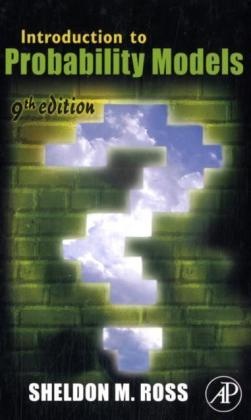Read more
Provides an introduction to elementary probability theory and stochastic processes, and shows how probability theory can be applied to the study of phenomena in fields such as engineering, computer science, and others. This work includes several sections relating to actuaries, on Compound Random Variables, and on Hidden Markov Chains.
List of contents
Preface
1. Introduction to Probability Theory;
2. Random Variables
3. Conditional Probability and Conditional Expectation
4. Markov Chains
5. The Exponential Distribution and the Poisson Process
6. Continuous-Time Markov Chains
7. Renewal Theory and Its Applications
8. Queueing Theory
9. Reliability Theory
10. Brownian Motion and Stationary Processes
11. Simulation
Appendix: Solutions to Starred Exercises
Index
About the author
Sheldon M. Ross is a professor in the Department of Industrial Engineering and Operations Research at the University of Southern California. He received his Ph.D. in statistics at Stanford University in 1968. He has published many technical articles and textbooks in the areas of statistics and applied probability. Professor Ross is the founding and continuing editor of the journal "Probability in the Engineering" and "Informational Sciences". He is a Fellow of the Institute of Mathematical Statistics, and a recipient of the Humboldt US Senior Scientist Award.
Report
Praise from Reviewers:
"I think Ross has done an admirable job of covering the breadth of applied probability. Ross writes fantastic problems which really force the students to think divergently...The examples, like the exercises are great.
- Matt Carlton, California Polytechnic Institute
"This is a fascinating introduction to applications from a variety of disciplines. Any curious student will love this book."
- Jean LeMaire, University of Pennsylvania
"This book may be a model in the organization of the education process. I would definitely rate this text to be the best probability models book at its level of difficulty...far more sophisticated and deliberate than its competitors.
- Kris Ostaszewski, University of Illinois

